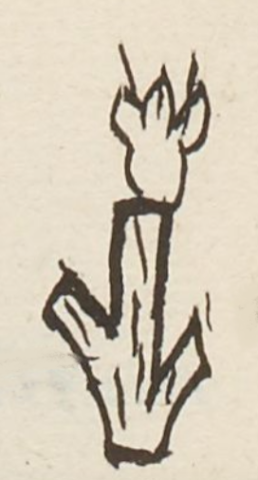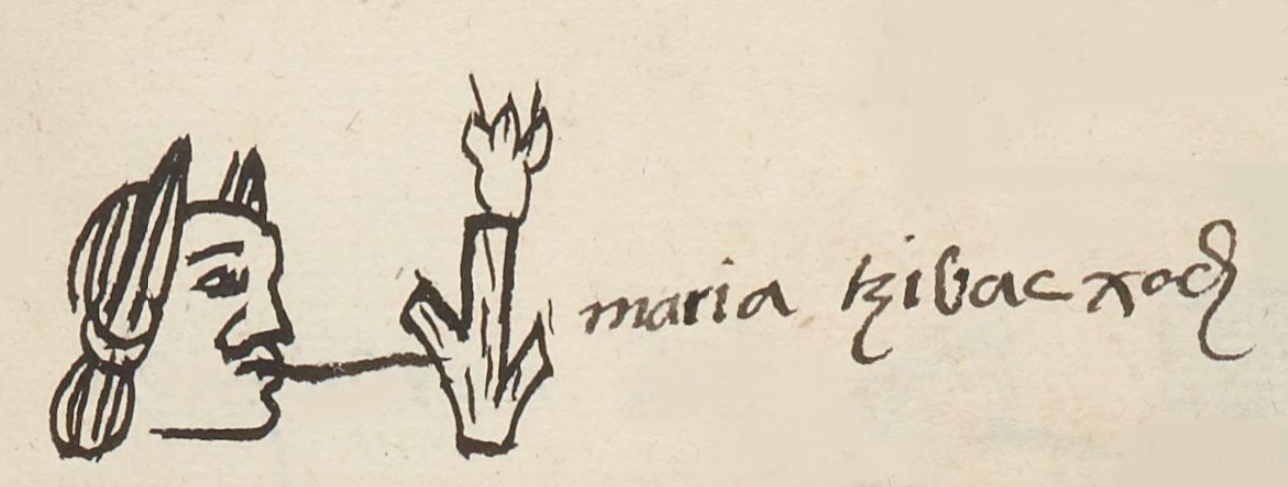Tzihuacxoch (MH492r)
This black-line drawing of the compound glyph for the personal name Tzihuacxoch (attested here as a female) has two prominent features. At the bottom is a tree (cuahuitl) with branches cut off, which provides the phonetic dimension of tzihuactli, a small agave with a spiny floral stalk. Above that is an upright flower (xochitl). The lower plant has been cut in the shape of the trunk that has some branches cut off. It appears to have bark or some texturing on the exterior. The flower has a tripartite petal arrangement at the top and two protruding pistils or stamens.
Stephanie Wood
The two-part plant name is thus something like "Agave Flower." Flowers can vary considerably within a manuscript and, of course, across manuscripts. See the image of the tzihuactli plant in Book 11 of the Florentine Codex, which shows a significant stalk and flowers at the top.
A metaphorical use of tzihuactli is found in the huehuetlatolli (“elders’ wisdom; words of the elders”) compiled under the leadership of Fray Andrés de Olmos. In the published version’s glossary, an editor’s note tells us that “in the original Nahuatl, tzihuactli, teteihuitl, is a diphrasism that refers to two objects [used in] sacrificial rites.”
Stephanie Wood
maria tzivacxoch
María Tzihuacxoch
Stephanie Wood
1560
Stephanie Wood
cactus, cactos, magueyes, flores

tzihuac(tli), a small agave with a spiny flower stalk, https://nahuatl.wired-humanities.org/content/tzihuactli
xoch(itl), flower, https://nahuatl.wired-humanities.org/content/xochitl
Flor de Maguey
Stephanie Wood
Matrícula de Huexotzinco, folio 492r, World Digital Library, https://www.loc.gov/resource/gdcwdl.wdl_15282/?sp=63&st=image.
This manuscript is hosted by the Library of Congress and the World Digital Library; used here with the Creative Commons, “Attribution-NonCommercial-ShareAlike 3.0 License” (CC-BY-NC-SAq .0).









